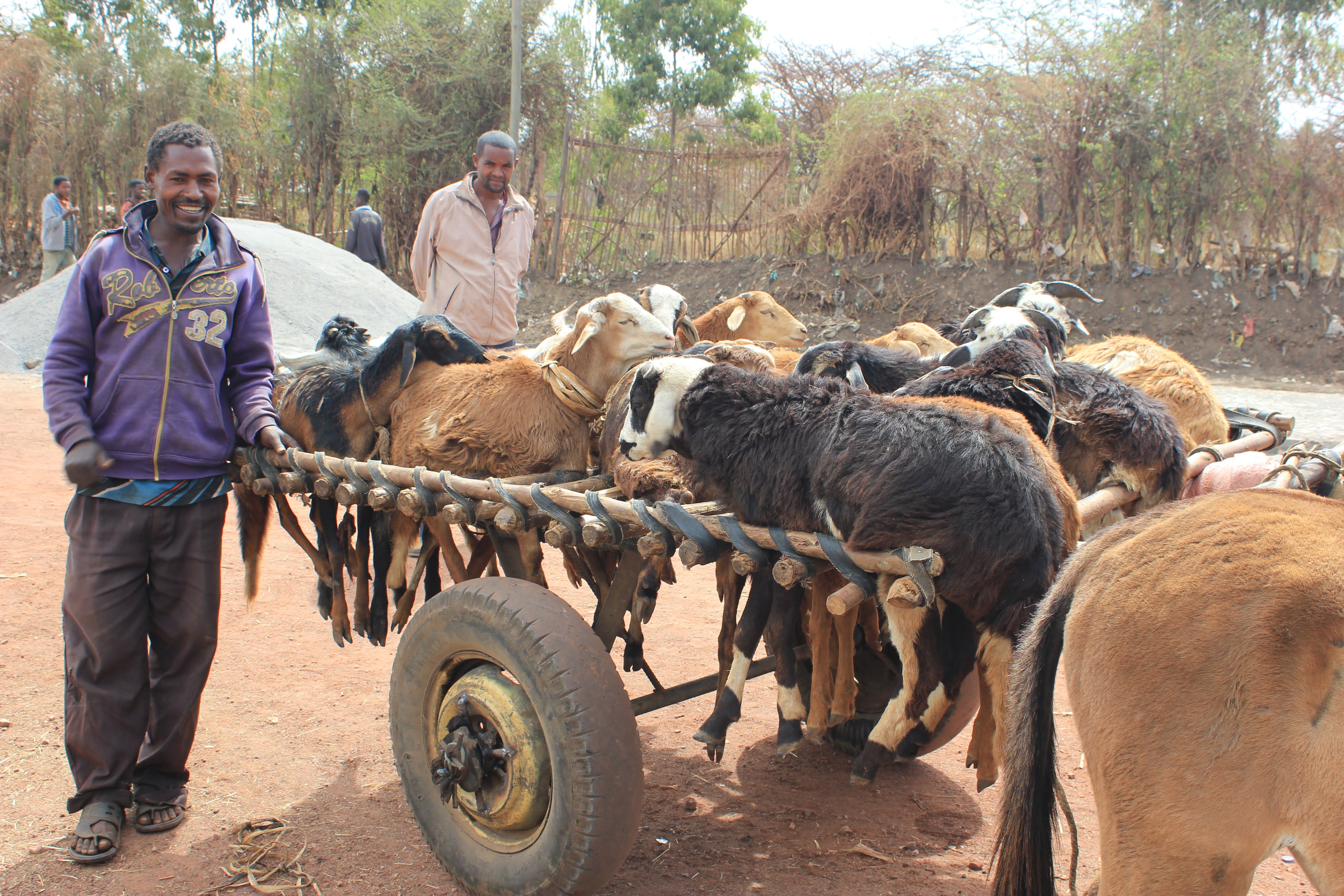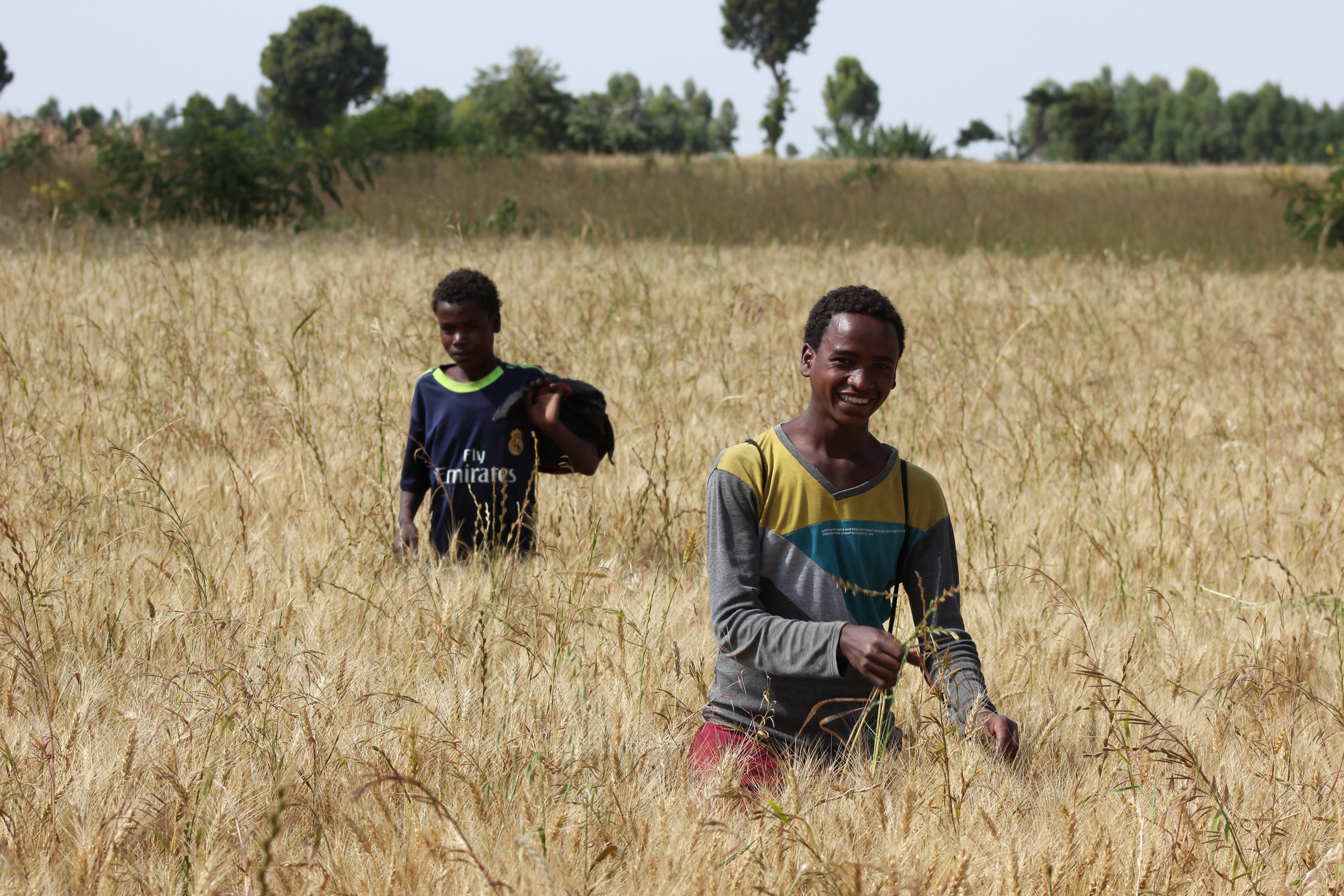The Ethiopian government has a big dream: restoring 22 million hectares of degraded lands and forests by 2030. By doing so, the country aims not only to increase tree cover and restore degraded forests, but also to significantly enhance the forestry sector’s contribution to agricultural production systems, water and energy; to improve food and nutritional security; and to create more opportunities for employment and household income. It is a bold and laudable pledge, made as part of the 2011 Bonn Challenge and the 2014 New York Climate Summit’s goal of restoring 350 million of hectares worldwide by 2030. But what’s the best way to make it a reality?
With some 80% of Ethiopians living in rural areas, one approach is to pour resources into forest protection, rehabilitation and conservation by enlisting smallholder farmer labor for the cause mainly through food or cash for work programs. Until now, that has been the predominant method of action of projects supported by development partners. Meanwhile, the government’s approach has been to increase awareness of smallholders on the need to responsibly manage land and other natural resources and systematically mobilize these rural communities to provide free labor for landscape restoration tasks through annual soil and water conservation work and tree planting campaigns.
But either way, restoration must also create socio-economic incentive for this massive population that depends on these landscapes for livelihoods. There is a growing recognition that communities should be able to reap more economic benefits and have better control over the land they are restoring – both within restoration processes, and in general after the land has been restored.
To this end, a new forest law was enacted in January this year that is a significant step in the right direction, says Habtemariam Kassa, Team Leader of Forests and Human Well-being Research at the Center for International Forestry Research (CIFOR) who supported efforts of the Ministry in the process of revising the national forest law. The 2018 National Forest Law – a revised version of the 2007 forest law – now clearly recognizes the rights of communities and acknowledges their role in managing natural forests and establishing plantations, without unduly compromising ecological services or biodiversity.
Ato Kebede Yimam, State Minister of the Forestry Sector, says the new law contains the following three key changes:
- Recognizing participatory forest management as a vehicle to enhance the role of communities in sharing responsibilities and benefits of managing natural forests in accordance with agreed-upon management plans;
- Providing incentives for the private forest developers through mechanisms such as lease-free land, better access to land use and forest ownership certificates, and tax holiday until and including the first harvest (for private investors and associations) and the second harvest (for communities); and
- Putting severe penalties on those who expand farming into forests; tamper with forest boundaries; or set fire, harm endangered species, settle, or hunt or graze animals in state, communal, association or private forests.
Minister Yimam says that his ministry has been working to socialize the new law since it was enacted in January 2018. The revisions were based on inputs from policy- and decision-makers at a range of levels, as well as CIFOR scientists – which, Minister Yimam says, make the law an impressive example of science and politics coming together for the betterment of a landscape.
“The law, recognizing the need to strengthen the role of the State in protecting biodiversity rich forests with global and national significance, has identified reserved forests where access is strictly limited,” says Yimam. “On the other hand, the law intends to promote the socio-economic contribution of forests to the surrounding communities and to local and national economies.
“It is designed to significantly enhance the involvement and ownership of communities and associations in the establishment of plantation forests, in the restoration of degraded forests, and in responsible management and sustainable use of natural forests.”

CHANGE OF SCENERY
According to Kassa, a key shift in the new law is its recognition of the need to maximize socio-economic benefits of all forest types to the surrounding communities. In the past, when communities managed natural forests under participatory forest management paradigms, “the only thing that they could use were non-timber forest products (NTFP), because most experts considered that cutting indigenous trees was a forbidden act,” Kassa describes. So, the economic returns for managing forests were not really worth communities’ efforts. As such, “we recommended that the law allow a certain level of timber harvesting in natural forests based on forest management plan to be developed,” he says.
Where you have degraded forest, the community can organize themselves, and with the approval of the relevant authority, can have all the responsibility of managing that forest as a community forest
To some senior foresters invited to discuss the law in draft phases, this sounded undesirable and even dangerous: “There was a certain group who were really against some of these changes, because they thought that it would open up all natural forests for individuals and communities,” says Kassa. So a new article was created, whereby forests of significant biodiversity are demarcated, and treated as ‘no-go zones.’ “This also places responsibility on the state for protecting biodiversity-rich forests, which wasn’t so obvious before,” he says.
The 2007 law only made mention of state and private forests. This meant that all restored forest land was treated as state property, so even after decades of restoration effort by a given community, the state could reallocate the land to other users. This tenure uncertainty demotivated communities to invest in forest landscape restoration. Since they didn’t clearly stand to benefit from landscape restoration and tree-planting, there was little incentive for them to take care of state-owned lands.
The new law, in contrast, grants rights of communities to manage and benefit from forests “very explicitly,” says Minister Yimam. It does so by recognizing four categories of forest – state, private, community and association – thereby opening up new avenues for involvement and ownership. “So where you have degraded forest, the community can organize themselves, and with the approval of the relevant authority, can have all the responsibility of managing that forest as a community forest,” he explains.
“When you have groups of women or unemployed people, you can organize them to establish plantations on degraded hillsides, or even reforest and manage degraded forest, and this can be recognized as an association forest. Communities can then also stand to benefit financially from the carbon credits available for reforestation and forest preservation.”

REVISION TO REALITY
These new developments were hard-won. Kassa and his colleagues at CIFOR attempted to contribute similar content to the law’s predecessor in 2007, but then, forestry issues fell under the Ministry of Agriculture’s jurisdiction, and the sector was not getting the political attention it deserved. “We felt we were not really being listened to,” recounts Kassa.
When the Ministry of Environment and Forests (now the Ministry of Environment, Forest and Climate Change) was established in 2013, CIFOR staff and other national researchers pushed hard for it to confront and address the limitations of the 2007 law, advocating that forest sector development could bring a host of economic benefits as well as help the country attain its national and international restoration commitments. The Ministry listened, set up a committee to work with the scientists, and revised the law according to their technical feedback.
However, putting a law to work is always a challenge. Kassa says the Ministry and relevant regional authorities will need significant support to translate the law into concrete actions on the ground. One issue is expertise. The focus of forestry training has thus far been on enhancing the protection function of forests rather than the livelihoods of forest dependent communities, says Kassa, and now leaders and experts in forestry will need new knowledge and skills.
What’s more, “Ethiopia is a federal state, and the various regional governments have been forming different institutional arrangements to manage the forestry sector”, says Minister Yimam. “We need to develop the understanding that the regions can produce their own guidelines to clarify and specify certain articles, but all these cannot go beyond or against the national forest law.”
Both Minister Yimam and Kassa are hopeful that rural communities and forests throughout the country will soon experience the benefits of the new law’s possibilities. “Ethiopia’s 2018 National Forest Law is a really progressive law, and if it is implemented properly it is going to make a big difference” says Minister Yimam.
“The next step is to support the efforts of the Ethiopian Government as it attempts to put in place appropriate structures at different levels, redefine the roles of experts and build their capacity to actualize the rights of communities and other forest managers provided by the law,” concludes Kassa.
We want you to share Forests News content, which is licensed under Creative Commons Attribution-NonCommercial-ShareAlike 4.0 International (CC BY-NC-SA 4.0). This means you are free to redistribute our material for non-commercial purposes. All we ask is that you give Forests News appropriate credit and link to the original Forests News content, indicate if changes were made, and distribute your contributions under the same Creative Commons license. You must notify Forests News if you repost, reprint or reuse our materials by contacting forestsnews@cifor-icraf.org.

